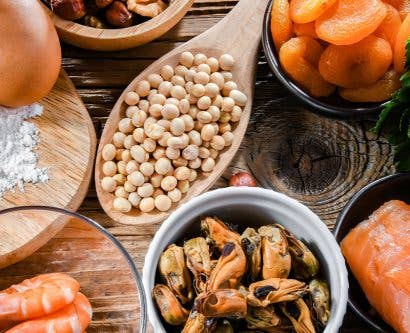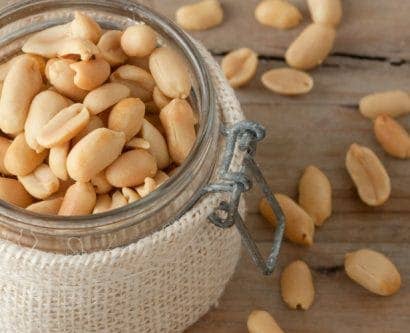What is Taste and Why is it Important in Food Products?
You are enjoying that first mouthful of a full English breakfast. You take a crispy shard of bacon, some soft scrambled eggs, a few fried mushrooms, of course some baked beans and load it onto your fork to enjoy that all important first bite. It tastes delicious and you know that – but why?
There are many different factors that come into play when you tuck into and enjoy the taste of your food – it is something that most of us experience every single day. As a result of this, it also plays a huge role in our food habits. Ultimately, how we taste foods plays into many key areas of food consumption, production and purchasing. There are many factors which can affect your taste, and so many food producers look to optimise their products in order to satisfy your taste buds. If you are looking to create food products to sell, it is important to understand the different types of taste.
In this article, we will explain the importance of taste in multiple areas of food and drink. We will give an overview of the different types of taste and how it works, guidance on understanding taste perception and a look at why we taste to begin with!
Why do we Taste?
Taste is one of the five senses and is one whose importance dates back millions of years. Speaking from an evolutionary standpoint, taste was a key defence mechanism for animals and early humans navigating a wilder food offering than we may be used to nowadays. Taste was often what helped distinguish between safe and harmful foods, with toxic and poisonous plants giving off a more bitter and unpleasant taste as opposed to the sweeter taste of safer, nutrient and energy dense plants essential for survival.
The gustatory system is the sensory system partly responsible for our perception of taste and flavour. In humans it is spread across cells in our mouth and on our tongue, nerves and a region of the brain known as the gustatory cortex.
So what is taste? Taste is a two-phase chemical reaction that involves not only your mouth and throat but also your nose for smell. A sensation that encompasses so much and utilises many areas of the body may be described as the sensation of flavour perceived in the mouth and throat on contact with a substance. It is caused by the chemical compounds of foods which interact with sensory cells in your taste buds, sending information to your brain to help you identify the taste of your food. We will investigate the role that smell plays further into the article.
Engaging our mouths and taste buds is one of the first stages in the process of eating food, before we actually ingest it. Therefore, taste acts as an opportunity to recognise that a food may be dangerous and helps warn us to not consume it before too much harm is done. It is, of course, far easier and less unpleasant to spit out food at the first unsavoury taste rather than digesting and absorbing food that could make us ill.

Taste, among a surprising amount of other senses, also actually prepares the body to metabolise food. When we smell, taste, see, touch and even hear food, millions of signals shoot from the brain to our stomachs signalling that food is about to be consumed. This kickstarts the digestive system so that it is ready to metabolise the food as it enters our bodies. For example, imagine you are cooking your dinner and tasting a little along the way. You have been smelling all the different foods, hearing the sizzle of them cooking and feeling the ingredients in your hands. All of these senses work together to signal to your body that food is about to be consumed so that it may digest the food more easily.
Understanding taste and what your customers enjoy, and will come back for more of, is key to creating a successful food product – whether that’s the perfect cookie recipe, dish on your menu or creating a new cocktail combo. As we have mentioned, humans are naturally drawn to sweeter, high energy foods. If you run a food business, think about how you can make foods that people will enjoy based on what people taste, without your products being too high in sugar or fat. Consider other, more natural forms of sugar and less processed versions of the foods you may create.
If you have or are thinking about starting a home food business, then take a look at our Starting a Food Business From Home course for more information.
How Does Taste Work?
We have briefly mentioned the role of taste buds in how taste works, but will go into some more detail in this section of the article. Taste buds are the little bumps on your tongue (known as papillae), they are covered in microscopic hairs called microvilli. These send messages to the brain about the taste of a food and if it is sweet, sour, bitter, salty or umami. On average, a person has around 10,000 taste buds which are replaced around every 2 week. However, as you get older, fewer of these taste buds get replaced. This is why foods often don’t taste as strong to adults as they do to children. Think about all those times as a child being told that certain foods were an ‘acquired taste’ that you would enjoy when you were older – think coffee, blue cheese, brussels sprouts or even dark chocolate!
Age is, therefore, a key point to consider when creating food to sell to your customers. You must think about who your target market is and then create food that will likely taste good to these groups.

Genetics have also been shown to play a role in how we taste. There are certain genetic variations in taste and smell receptors and this may indicate why, within families for example, some prefer sweet over savoury, some may hate the taste of coriander and some may not like the taste of coffee. Infact, studies between identical and non-identical twins have shown that it is not only environmental factors that impact our taste preferences, but also our genetics.
Did You Know?
Taste and smell are closely linked in how we perceive the food we eat. They are separate senses with their own receptor organs and systems however they are very much linked . Just as chemicals in food stimulate the cells in taste buds, specialised cells in the nose pickup airborne odour molecules. Because this largely happens just before or at the same time as taste, the two senses are often entwined.
The close relationship between these two senses is apparent in how we perceive the flavours and taste of food. Imagine you are suffering a head cold, bunged up and nasal – to top it all off you can’t properly enjoy the taste of your lunch because your nose is blocked and you can’t smell. What is being affected here is your sensory perception of the food, because your brain is lacking the smells which interact with the taste to create the full ‘picture’ of taste that you are used to experiencing.
Guidance on Understanding Taste Perception
As we have spoken about earlier in the article, taste perception is key to how we enjoy – or not! – the food we eat and how food is produced. Knowing how different chemical compounds of a soluble stimulus affect different taste buds and areas of the brain is key to understanding food creation – what customers will like, dislike and why. Unsurprisingly, taste is often the most important factor in customers deciding whether or not they like a product. Fancy labels and ethical claims can only do so much in drawing in and keeping customers – how the product tastes will ultimately be the deciding factor for many consumers. Therefore, taste should be a key focus when developing any food product – no matter how small or large the business.

Briefly referencing our evolutionary taste buds again and thus, our primal desire for sweet and fatty foods, we may explore how this affects food production in modern day. We are naturally drawn to foods with a high sugar and high fat content because foods typically high in these provide more energy. In the days where humans were hunter-gatherers, food was less readily available and so when you found high energy food, you consumed all you could. Fast forward a couple of million years and this instinct is still engraved into us but with one key difference – the availability of food.
Fat makes things taste better because it essentially carries flavour – enhancing and carrying aromas and when we eat sugar, the brain produces huge surges of dopamine – the feel good chemical in our bodies. These sweet and fatty foods are now more than ever readily available. However, it’s very important to remember that they shouldn’t be all we eat, we should instead look to enjoy such foods alongside a nutritious and balanced diet.
These factors are key in understanding what tastes people often look for when buying food. When you eat a pack of chocolate digestives or a hamburger, you often find yourself drawn back because you enjoyed the product so much and wish to go back for more. Food manufacturers have long tapped into our love for foods high in fat, salt and sugar to get people coming back time and time again, leading to a rise in ultra-processed foods, specifically designed to both taste and feel good.
In a move to curb Britain’s obesity crisis, the government is looking to implement landmark legislation. The restrictions of products High in Fat, Salt and Sugar (HFSS) legislation seeks to place media restrictions on advertising, on volume promotions, and location promotions. Whilst the legislation is currently delayed, it will be a great challenge to the retail food and drink industry.
Ultimately, the stress on our diet and the foods we eat should never be about restrictions, cutting out entire food groups or never eating a chocolate biscuit again. The key to eating, and enjoying a healthy diet is balance. To find out more on nutrition and healthy eating, consider taking our course here.

What are the Different Types of Taste?
Humans can experience 5 basic tastes – sweet, sour, salty, bitter and umami. Scientists also describe two more tastes on top of those 5 that our tongue is sensitive to, and they are astringent and pungent.
- Sweet – Sweetness indicates the presence of sugar in food. As mentioned earlier in the article, humans are naturally drawn to sweet tasting foods and it is pleasurable to most. Common foods that taste sweet are cinnamon, dill, honey, butter, carrots, avocados and, of course, sugar.
- Sour – Sour tastes indicate that foods have a level of acidity to them. This stimulates the digestive system, metabolism and appetite. Think about how your mouth waters after eating a sour sweet – that is your body releasing the first wave of digestive enzymes into your saliva ready to break down food! Typical foods that taste sour are citrus fruits, yoghurt, tomatoes, vinegar and some cheeses such as goats.
- Salty – Salty is the most simple of the tastes – it is the compound sodium chloride, which is necessary for humans as it regulates bodily fluids and creates nerve impulses. Examples of foods with a salty taste are olives, seaweed, soy sauce or celery. Salt, whilst having its own taste, also amplifies the flavour of other ingredients and this is why it plays such an essential role in both cooking and baking. A key example of this is to take two slices of tomato – lightly salt one and leave the other as is. Taste both and you will have sealed proof on the importance of salting your food.
- Bitter – As we spoke about earlier in the article, to animals and early humans, bitterness was an indication of foods to be avoided due to them being toxic or poisonous. Generally humans still tend to avoid large amounts of bitter tasting foods, but this is not to say that it is an entirely unpleasant taste category – think coffee, unsweetened cocoa, citrus peel and quinine (found in many tonic waters). It might be a safe assumption to say that bitterness as a stand along taste can be challenging. However, it invites a multitude of complex flavours when combined with other tastes such as sweet or salty.
- Umami – This is a Japanese word translating roughly to ‘savoury’ or ‘meaty’ and thus applies to the sensation of savouriness. The taste of umami is often paired alongside saltiness as salt magnifies the flavours and tastes – giving you an intensely savoury sensation. Umami-rich foods include aged cheeses such as parmesan, miso paste, soy sauce, mushrooms, walnuts and some fresh and cured meats.
Those are the five basic tastes that the human tongue is sensitive to, below is a more in-depth explanation of the taste sensations astringency and pungency.
- Astringent – some foods, such as tea or unripe fruits, contain tannins that cause organic tissue (such as our tongues or mouth) to constrict. Less exact terms which may be used to describe this sensation include rubbery, hard, dry or rough.
- Pungent – The pungent taste is perceived as dry heat. This includes chillies, ginger, peppermint, horseradish and garlic.
Familiarising yourself with all the different types of tastes we can perceive is an essential first step into cooking delicious food. Once you get to grips with which foods are primarily dominated by a certain taste, or which tastes pair well together – you can cook exciting, complex and flavourful foods. Creating tasty food products is at the heart of any food business and there are many routes you can take with the food you cook. To find out more on different food business options, check out our article here.

We hope you found this article useful in understanding taste, its importance and impacts on the way food products are made, sold and consumed. Whether you are running a meal prep business from your kitchen, or developing food products for huge production lines, taste is an essential part of the creative process behind making delicious food and meals. It is vital to consider how the tastes of food products will be perceived by your customers.
Keep an eye out for the second article in this series, which will explore flavours and food pairings – this is a second key component to understanding the process behind production of good food that customers are drawn back to.
For any more information, feel free to get in touch. High Speed Training offers a wide variety of courses and resources that can help.











